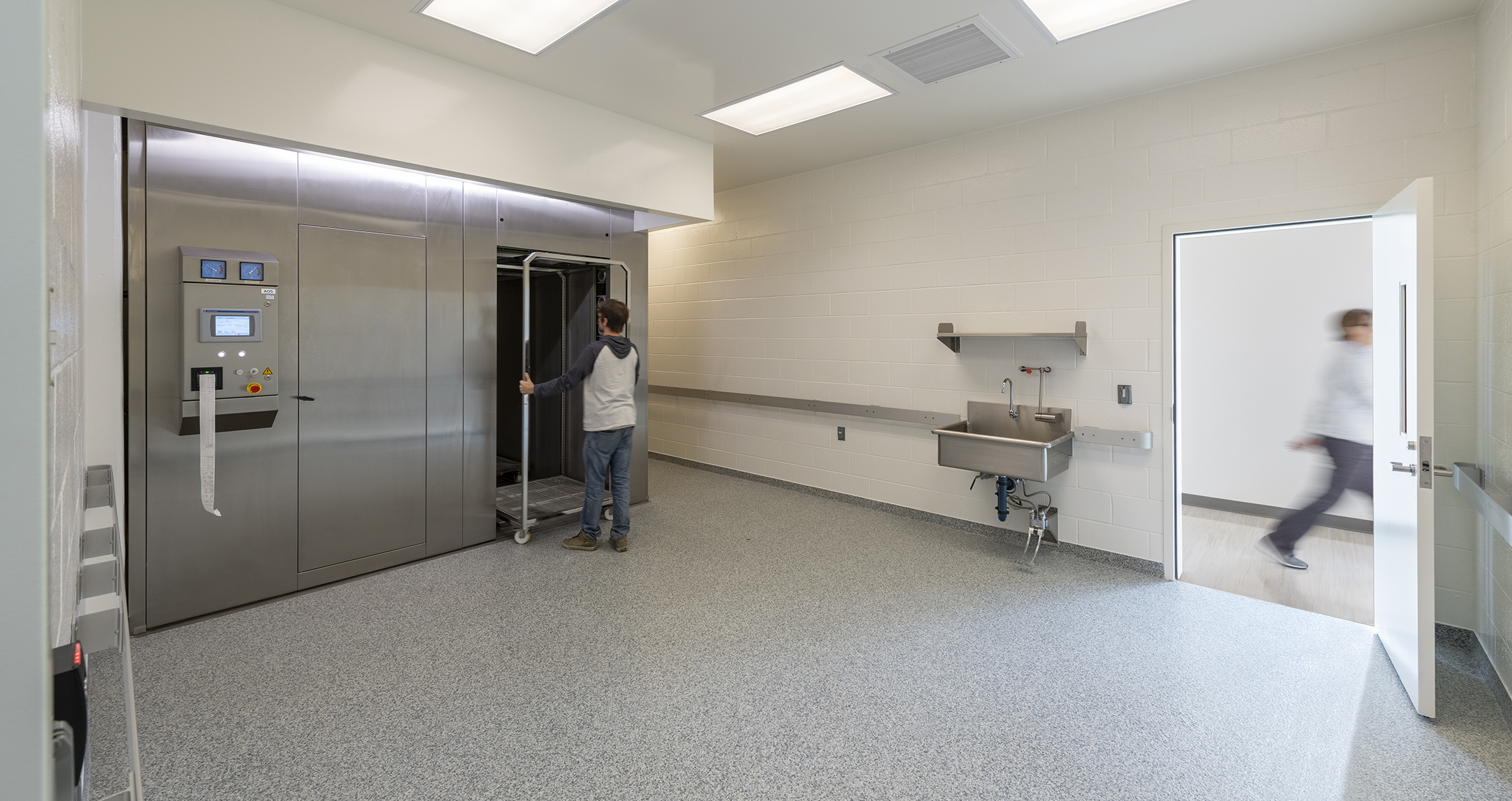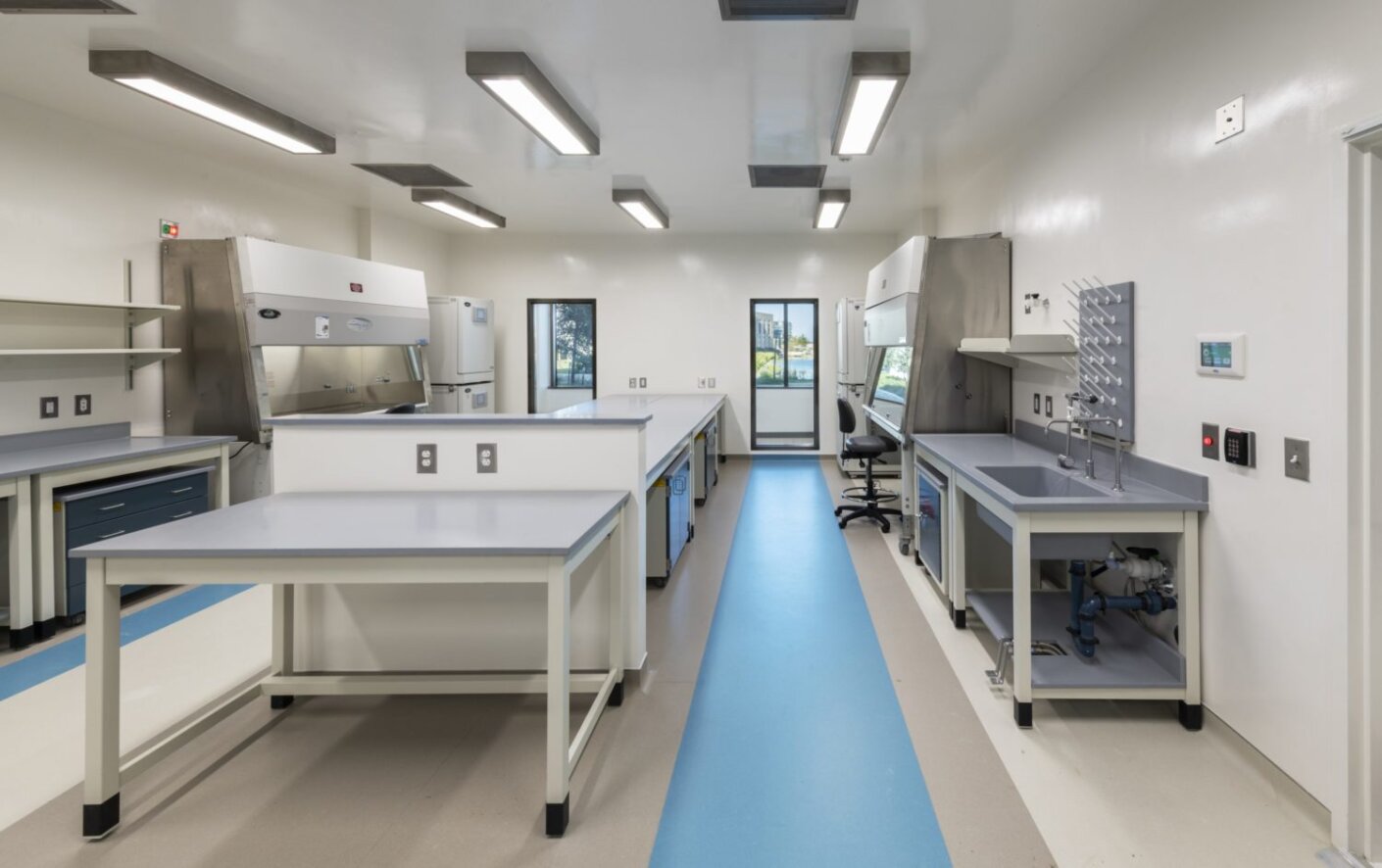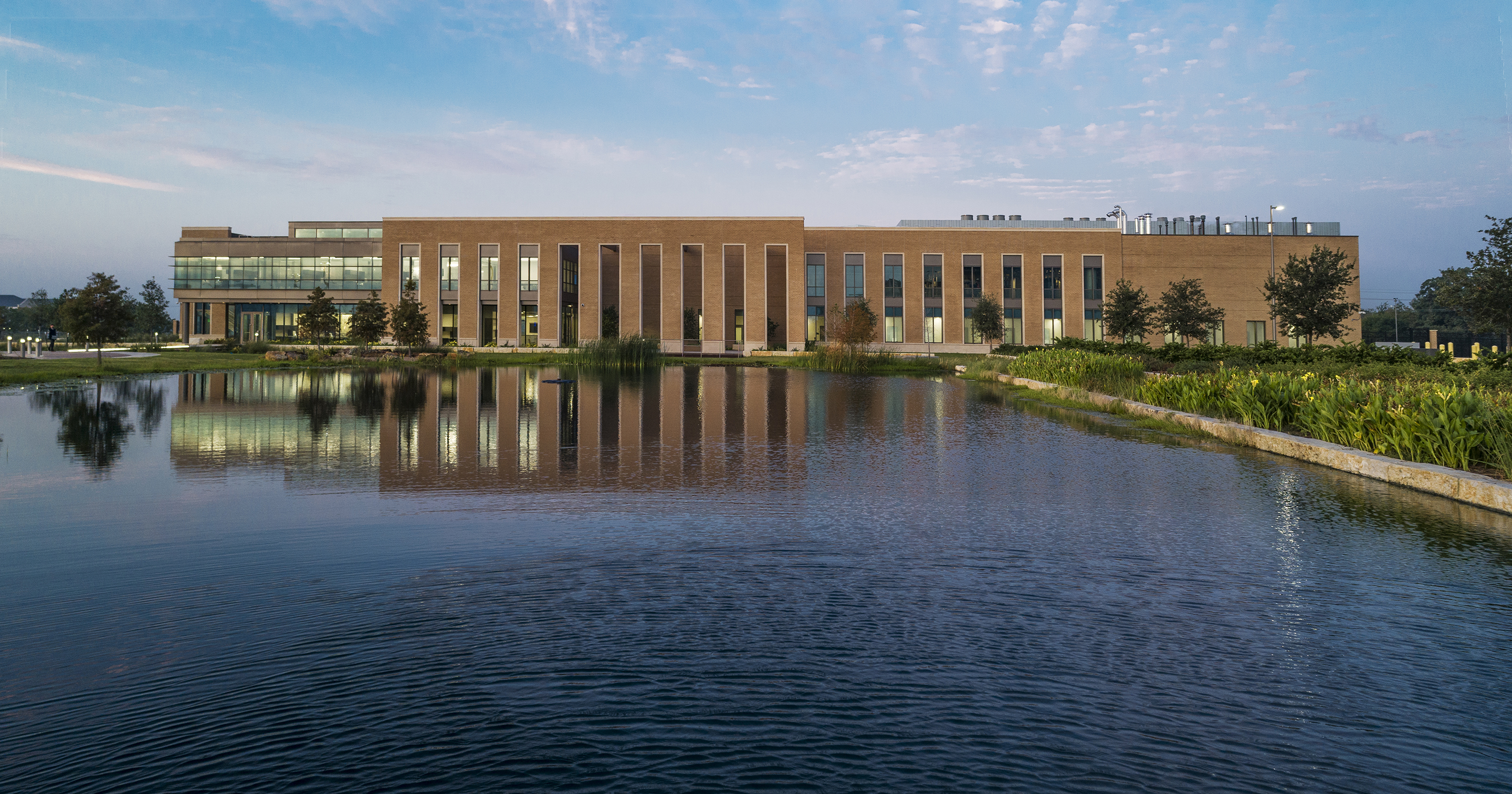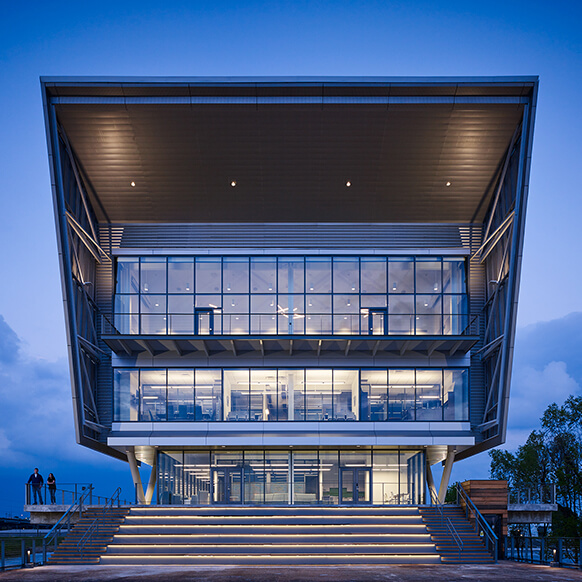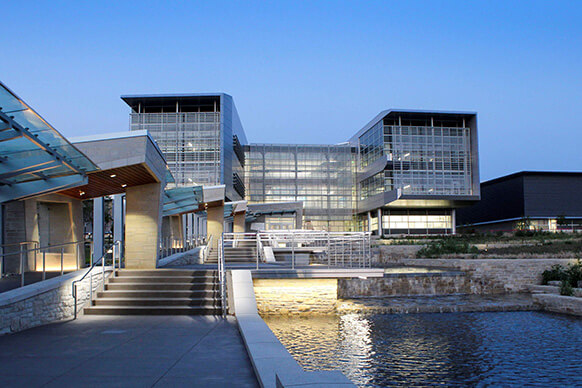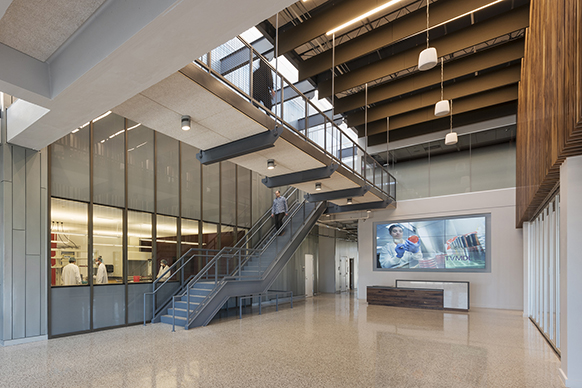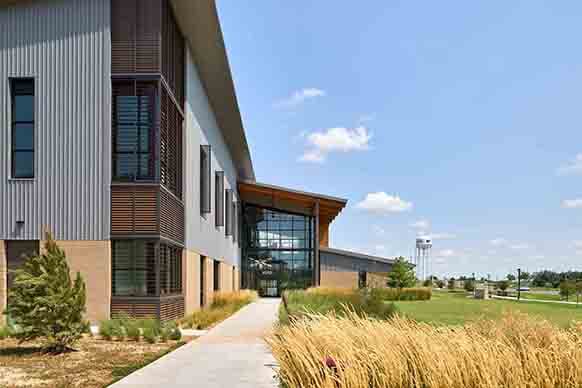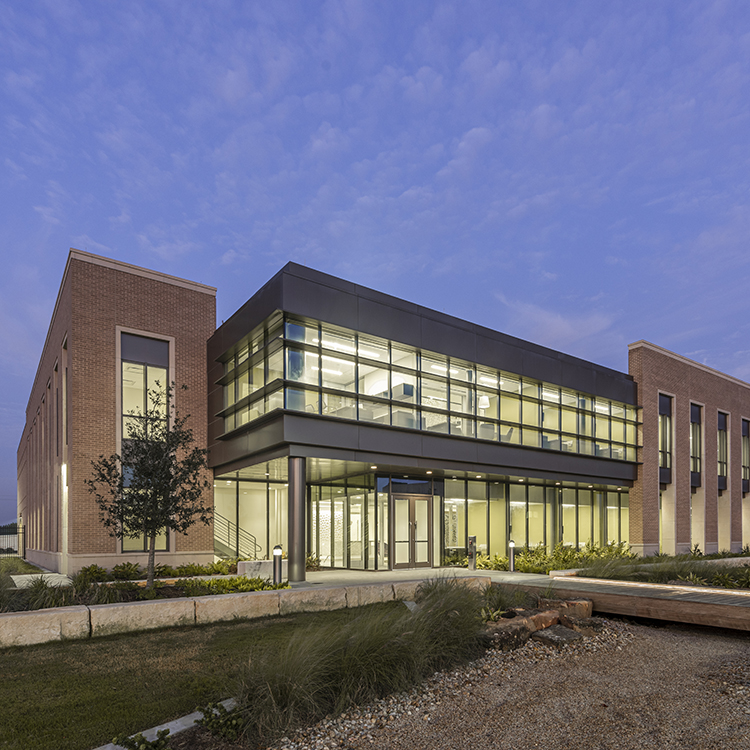
Global Health Research Complex
When Texas A&M University determined that there was a critical need for a new facility that allowed them to conduct research on high consequence diseases that can impact both agricultural species and humans, the expectations were high. As the link between animal and human health becomes more clear, research space to study the worst of these zoonotic diseases is in short supply. Not only did the facility need to provide new specialized and highly technical space for research, but Texas A&M also needed a building that offered an unparalleled opportunity to expand its research profile and stand out amongst its peer institutions. Perkins&Will worked closely with Texas A&M to realize that need. Together, we’re invested in promoting new discoveries that will protect the world and its citizens.
The Global Health Research Complex houses state-of-the-art high containment facilities for research that will improve our understanding of zoonotic pathogens that can jump from animal species to humans, allow the development of innovative methods for monitoring, detecting and preventing disease, and provide treatment and containment options during major outbreaks. The facility includes BSL-2/ABSL-2, BSL-3/ABSL-3 and BSL-3Ag research spaces for in vivo studies, along with ACL-2 and ACL-3 insectary spaces providing the opportunity to study disease transmission. Our nation, and the world, has a new home from which to meet emerging agricultural and public health challenges head-on.
The Global Health Research Complex provides a new opportunity for researchers, not just from Texas A&M University, but from around the world. Researchers here are dedicated to discovering innovative methods for monitoring, detecting, and preventing disease. The facility includes BSL-2, ABSL-2, BSL-3, and BSL-3Ag research space to allow for work with some of the world’s worst agricultural pathogens. As one of only a few modern BSL-3Ag facilities in the country, it provides unique opportunities for researchers from around the world.
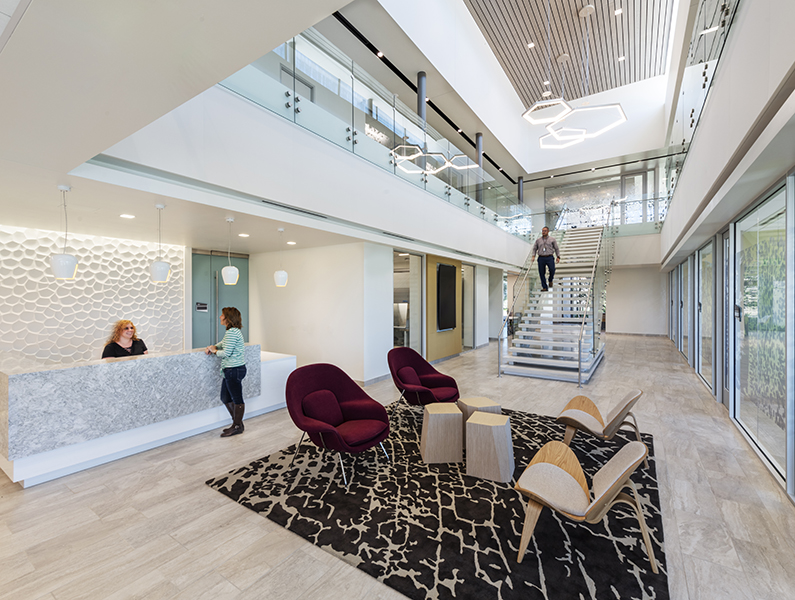
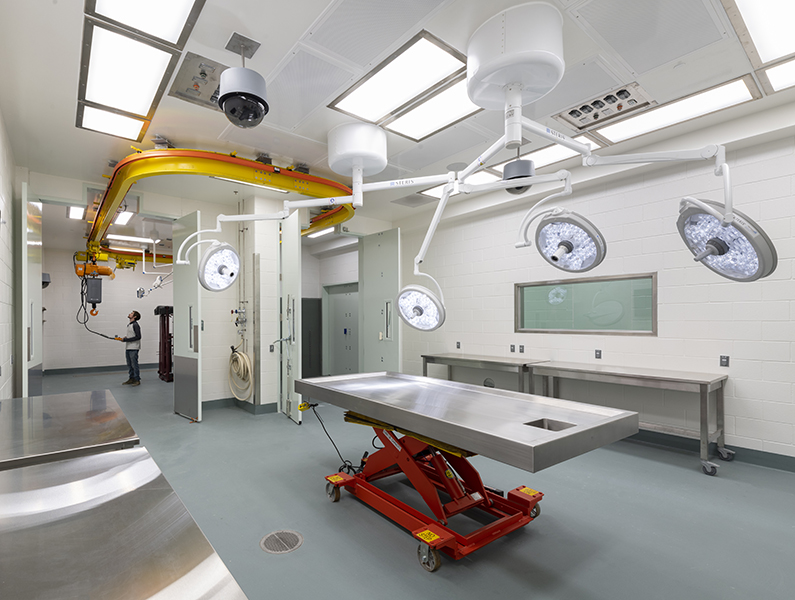
A BSL-3Ag facility requires building systems and a room envelope specially designed to contain high-consequence pathogens. BSL-3Ag spaces are designed to be airtight to prevent the escape of air from the room, while a robust mechanical system with built-in redundancies and a sophisticated controls system filters the air and maintains pressure differentials between low-risk and higher-risk spaces.
One of only a very small handful of modern BSL-3Ag facilities in North America. The GHRC is designed to allow researchers to work with a wide range of species from mice to bison.
Public and private health protection is a critical national mission. Following the attacks on 9/11, the United States renewed its focus on the potential threat of biological warfare from rogue terrorist groups. The government set aside significant funding for new laboratories to develop diagnostics, perform analyses, and develop countermeasures for attacks. Many of the newest emerging zoonotic diseases, pathogens that can infect both human and animal species, required cutting edge BSL-3 and BSL-3 Ag spaces that could continue the mission.
